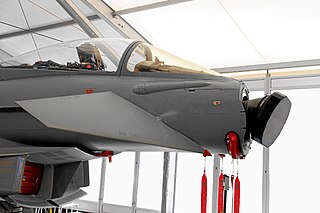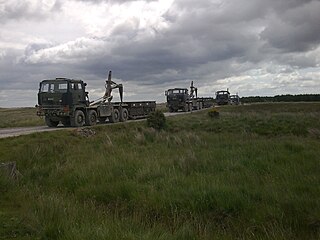
The Queen Elizabeth class is a class of two aircraft carriers of the United Kingdom's Royal Navy which are the central components of the UK Carrier Strike Group. The lead ship, HMS Queen Elizabeth, was named on 4 July 2014, in honour of Elizabeth I. She was commissioned on 7 December 2017. The second, HMS Prince of Wales, was launched on 21 December 2017, and was commissioned on 10 December 2019. In 2014 the UK Government announced that the second carrier would be brought into service, ending years of uncertainty surrounding its future. This was confirmed by the November 2015 Government Strategic Defence Review, with one carrier being available at any time.

Future planning of the Royal Navy's capabilities is set through periodic Defence Reviews carried out by the British Government. The Royal Navy's role in the 2020s, and beyond, is outlined in the 2021 defence white paper, which was published on 22 March 2021. The white paper is one component of the Integrated Review of Security, Defence, Development and Foreign Policy, titled as Global Britain in a Competitive Age which was published on 16 March 2021.

An active electronically scanned array (AESA) is a type of phased array antenna, which is a computer-controlled array antenna in which the beam of radio waves can be electronically steered to point in different directions without moving the antenna. In the AESA, each antenna element is connected to a small solid-state transmit/receive module (TRM) under the control of a computer, which performs the functions of a transmitter and/or receiver for the antenna. This contrasts with a passive electronically scanned array (PESA), in which all the antenna elements are connected to a single transmitter and/or receiver through phase shifters under the control of the computer. AESA's main use is in radar, and these are known as active phased array radar (APAR).

The Warrior tracked vehicle family is a series of British armoured vehicles, originally developed to replace FV430 series armoured vehicles. The Warrior started life as the MCV-80, "Mechanised Combat Vehicle for the 1980s". One of the requirements of the new vehicle was a top speed able to keep up with the projected new MBT, the MBT-80 – later cancelled and replaced by what became the Challenger 1 – which the then-current FV432 armoured personnel carrier could not. The project was begun in 1972. GKN Defence won the production contract in 1984 and the Warrior was accepted for service with the British Army in November 1984. GKN Defence was purchased by BAE Systems, via Alvis plc.

The Joint Combat Aircraft (JCA) is the official designation of the United Kingdom Ministry of Defence used for the F-35 Lightning II. The F-35, formerly the Joint Strike Fighter, is the result of the Joint Strike Fighter programme.

The United Kingdom's Strategic Command, previously known as Joint Forces Command (JFC), manages allocated joint capabilities from the three armed services.
The Royal Australian Navy, although a significant force in the Asia-Pacific region, is nonetheless classed as a medium-sized navy. Its fleet is based around two main types of surface combatant, with limited global deployment and air power capability. However, in 2009, a white paper, Defending Australia in the Asia Pacific Century: Force 2030, was produced by the Australian government which set out a programme of defence spending that will see significant improvements to the RAN's fleet and capabilities.

The Canberra class is a ship class of two landing helicopter dock (LHD) ships built for the Royal Australian Navy (RAN). Planning to upgrade the navy's amphibious fleet began in 2000, based on Australian experiences leading the International Force for East Timor peacekeeping operation. With a new climate for growing Australian Navy spending, a desire existed for forward defence capability for landing and supporting troops on Asian territory, that had never existed in Australian history, even with the old Majestic-class light fleet carriers, HMAS Melbourne and HMAS Sydney in the 1970s. In 2004, French company Direction des Constructions Navales (DCN) and Spanish company Navantia were invited to tender proposals, with DCN offering the Mistral-class amphibious assault ship and Navantia proposing the "Buque de Proyección Estratégica" design. The Spanish design was selected in 2007, with Navantia responsible for construction of the ships from the keel to the flight deck, and BAE Systems Australia handling the fabrication of the combat and communications systems. Finally, Siemens (Germany) supplied and fitted the azimuth thrusters.

The Defence Science and Technology Laboratory (Dstl) is an executive agency of the Ministry of Defence of the United Kingdom. Its stated purpose is "to maximise the impact of science and technology for the defence and security of the UK". The agency is headed by Doug Umbers as its (interim) Chief Executive, with the board being chaired by Adrian Belton. Ministerial responsibility lies with the Minister for Defence Procurement.

The Demountable Rack Offload and Pickup System (DROPS) is a family of logistics vehicles operated by the British Army, which consists of two vehicle types:

The Estonian Air Force is the aviation branch of the Estonian Defence Forces. The air force traces its history to 1918, and was re-established in its current form in 1991.
Capability management is a high-level integrative management function, with particular application in the context of defense.
Initial operating capability or initial operational capability (IOC) is the state achieved when a capability is available in its minimum usefully deployable form. The term is often used in government or military procurement.
The planning for the future of the Royal Air Force involves supporting ongoing British military operations, the introduction of new aircraft types, greater focus on network enabled capability and increasing interoperability with members of NATO.
Military capability is defined by the Australian Defence Force as "the ability to achieve a desired effect in a specific operating environment". It is defined by three interdependent factors: combat readiness, sustainable capability and force structure.
List of future or planned Canadian Armed Forces projects.
FCS/BCT unmanned aerial vehicles was a collection of unmanned aerial vehicles developed under the jurisdiction of the Future Combat Systems (FCS) program until it was dissolved and succeeded by the BCT Modernization program.

The Aerospace Defence Forces (VVKO) was a branch of the Armed Forces of the Russian Federation responsible for aerospace defence, and the operation of Russian military satellites and the Plesetsk Cosmodrome. It was established on 1 December 2011 and replaced the Russian Space Forces. The Aerospace Defence Forces was first commanded by former Space Forces commander Colonel General Oleg Ostapenko, who was promoted to Deputy Minister of Defence in November 2012. On 24 December 2012, Aleksandr Golovko was appointed the new commander. Although it is officially translated as aerospace in English, it covers both attacks from the air and from (outer) space, and some Russian writers translate it as "air and space" instead.
The Future Offensive Air System was a study to replace the Royal Air Force's strike capability, at the time provided by the Tornado GR4. Initial operational capability was expected around 2017. The FOAS was cancelled in June 2005 and was replaced by the Deep and Persistent Offensive Capability (DPOC) requirement, which was itself cancelled in the 2010 Strategic Defence and Security Review.

The BAE Systems Tempest is a proposed fighter aircraft concept that is under development in the United Kingdom for the British Royal Air Force, Swedish Air Force and the Italian Air Force (AMI). It is being developed under the Future Combat Air System (UK) programme by a consortium known as "Team Tempest", consisting of the UK Ministry of Defence, BAE Systems, Rolls-Royce, Leonardo S.p.A. and MBDA. The aircraft is intended to enter service from 2035 replacing the Eurofighter Typhoon aircraft in service with the RAF and AMI and the JAS 39 Gripen in Swedish service. Two billion pounds will be spent by the British government on the project by 2025.













